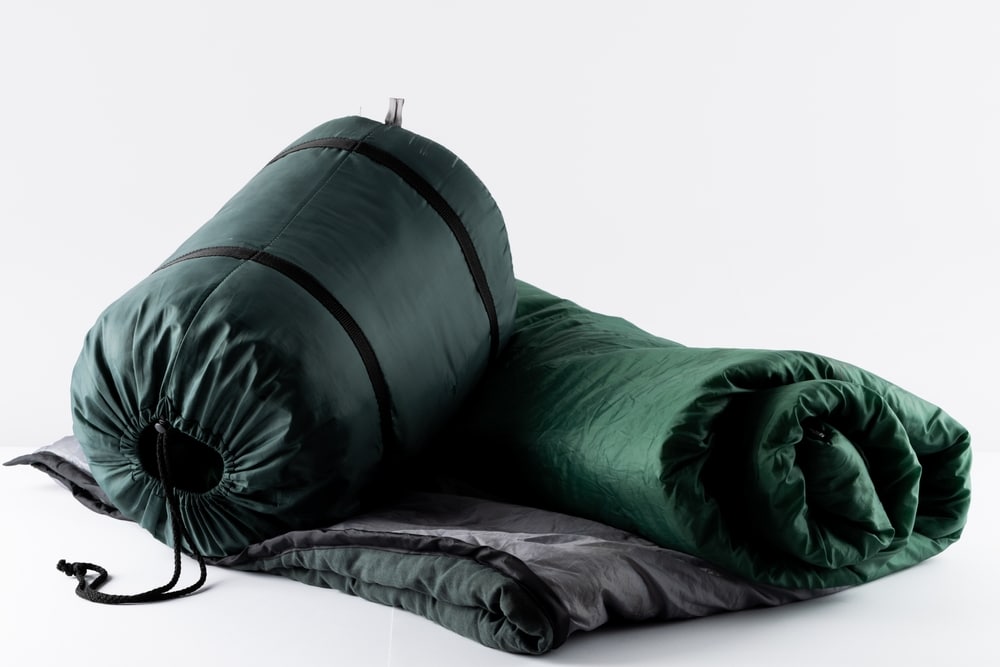Table of Contents
Before heading on an extended hiking or camping trip, organizing your backpack with food, supplies, and all the necessary attachments, including the sleeping bag, is essential. A seamless camping or smooth hiking tip depends on how you attach your sleeping bag to your backpack. Whether climbing over difficult terrain using hiking backpacks with external frames or a more traditional pack, knowing how to use this technique will ensure that your weight is always distributed, balanced, and easily accessible. This extensive guide details how to attach your sleeping bag, including all the necessary procedures and tips to make your camping experiences go more smoothly.

1. Choose the Right Backpack
Be sure your backpack can accommodate external attachments before you even start attaching your sleeping bag. Externally framed hiking backpacks have more connection points, facilitating better gear organization. Let’s examine a meticulously crafted guide with tips and ideas for packing a backpack.
2. Look for External Frames
Some backpacks have framework sections called external frames that provide extra locations for goods to be attached. For instance, hiking backpacks for longer treks and greater loads tend to have these frames. Please get to know these frames and the various attachment points they offer. Explore the best external frame backpacks for outdoor travelers to enjoy real-world experiences.
3. Locate and Prepare Attachment Points
Place your bag flat on the ground before you start to make it easier to reach its connection points. Check the sides and bottom of the pack for any straps or loops. These places are where equipment, such as tents and sleeping bags, is meant to be attached.
4. Rolling and Preparing Your Sleeping Bag
Start by rolling your sleeping bag securely. This ensures it takes up as little space as possible in your backpack. Place the sleeping bag inside a rain cover for additional moisture protection. This is an essential step to preserve your sleeping bag’s durability and insulation in bad weather.
5. Utilize Compression Straps for Compactness
Use the compression straps on your backpack to further compress the volume of your wrapped sleeping bag. Compression straps tighten heavy objects so that they fit more securely and manageably inside your pack. Tighten these straps to compress the sleeping bag and prevent it from shifting during your hike.
6. Secure Your Sleeping Bag to the Bottom
After preparing your sleeping bag, fasten it tightly in place using the appropriate loops or straps at the base of your backpack. These straps are made especially for heavier items like sleeping bags. To keep the sleeping bag from swinging or bouncing while you hike, make sure it is firmly fastened.
7. Reinforce with Bungee Cords
Use bungee cords to strengthen the sleeping bag’s attachment for increased security. Cross the cords over the sleeping bag and backpack, wrapping them around the outside of the pack or through the connection points. Securely tighten the bungee cords to avoid any movement or slipping during hiking.
8. Adjust Straps for Optimal Weight Distribution
While hiking, proper weight distribution is essential for maintaining balance and comfort. Adjust the straps on your backpack to ensure the weight is evenly distributed. Pay extra attention to how you fasten your sleeping bag to ensure the weight is evenly distributed. Also, consider placing heavier items to avoid strain on your back.
9. Double-Check and Tighten Strap
Make sure all the straps are properly fastened before starting your hiking journey. Loose straps can lead to shifting weight and discomfort during your hike. Please pay particular attention to the straps attached to your sleeping bag to ensure they are firmly secured.
10. Maintaining Balance
Check your sleeping bag’s attachment periodically as you go across different terrains to stay balanced. For a secure and comfortable hiking trip, ensure all your equipment, including your sleeping bag, is tightly fastened. Adjust straps or bungee cords to prevent the sleeping bag from affecting your balance.
11. Practice Makes Perfect
Practice fastening your sleeping bag to your backpack at home before camping. Familiarizing yourself with the steps involved will save you time and make your outdoor experience more effortless. Try out various attachment methods to see which one best suits your needs and backpack arrangement.
Advantages of Sleeping Bag

Attaching your sleeping bag to your backpack offers several advantages that enhance your camping or hiking experience.
Space Optimization
By attaching your sleeping bag to the outside of your backpack, you can maximize the space inside for additional necessities like food, water, clothes, and equipment.
Weight Distribution
One key advantage of attaching your sleeping bag to your backpack is the improved weight distribution. This means you can carry your gear more comfortably, reducing the strain on your back and shoulders.
Accessibility
Having your sleeping bag attached externally makes it easily accessible, especially during breaks or when setting up camp.
Convenience
Packing and unpacking are more accessible when the sleeping bag is attached outside. Protection
Protection
You can monitor the sleeping bag’s condition by placing it outside your backpack.
Ventilation
By fastening the sleeping bag to the exterior of your backpack, you may increase ventilation and lessen the possibility of mildew and other odors developing within your pack.
Customization
You can customize your backpack to fit your preferences and unique gear requirements with the help of external attachments, connection points, straps, or bungee cords.
Comfort
It can be uncomfortable to carry a large, bulky sleeping bag inside your backpack, especially on long adventures.
Conclusion
The procedure to attach a sleeping bag to your backpack is more than just practical; it’s essential to successful outdoor adventures. A smooth and comfortable camping or hiking vacation depends on a properly organized gear kit. Among the essentials, knowing how to attach your sleeping bag to your backpack securely stands out as a fundamental skill. You can improve your camping experience by learning to take care of your backpack’s external frames and use attachment points, bungee cords, and compression straps. You can ensure stability, safety on the trail, comfort, and convenience via proper weight distribution and a secure attachment. Therefore, remember how important it is to gain this ability as you prepare for your next excursion and let it be the foundation of amazing trips through the great outdoors.
